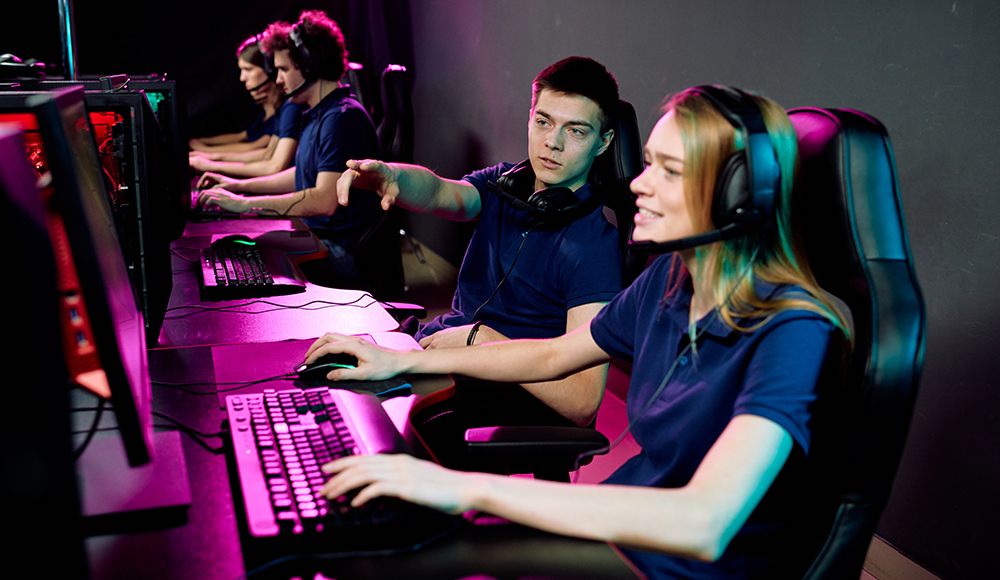Gaming has evolved significantly over the past few decades, resulting in a diverse landscape that caters to various types of players. Two of the most common categories within the gaming world are casual gaming and hardcore gaming. While both involve playing video games, they differ greatly in terms of player engagement, time investment, gaming preferences, and overall approach to the medium.
Understanding the differences between casual and hardcore gaming is essential for both players and developers, as it helps clarify the motivations and behaviors of each group. In this article, we will explore the key distinctions between casual and hardcore gaming, shedding light on their characteristics, advantages, challenges, and the impact they have on the gaming industry.
1. Time Commitment
Casual Gaming: Quick and Easy Sessions
Casual gaming is defined by short, accessible, and enjoyable gaming sessions that don’t require significant time investment. Casual gamers typically play for relaxation or entertainment during their free time, often in between other activities.
- Gaming Duration: Casual gamers may spend anywhere from a few minutes to an hour playing a game. Sessions are typically shorter, and the games are designed to be easy to pick up and play.
- No Long-Term Commitment: Casual gamers aren’t likely to invest hours or days in completing a game or mastering complex mechanics. Instead, they enjoy games that offer quick rewards and a satisfying experience in small bursts.
Casual gaming is designed to be flexible, with games that allow players to jump in and out without feeling like they need to devote large amounts of time to make progress.
Hardcore Gaming: Extensive Time Investment
In contrast, hardcore gaming requires much more dedication and time. Hardcore gamers typically invest significant hours into games, whether they’re single-player adventures, competitive multiplayer titles, or massive online worlds. This commitment is often linked to the desire for mastery, deeper immersion, or competitiveness.
- Gaming Duration: Hardcore gamers often play for several hours at a stretch, sometimes spending entire weekends or multiple sessions each week immersed in a game.
- Long-Term Commitment: Hardcore gamers aim for long-term goals, whether it’s completing challenging missions, exploring complex worlds, or reaching competitive ranks. Games that offer deep mechanics and high difficulty levels often appeal to this group.
The investment of time in hardcore gaming is often tied to the desire for personal achievement, mastery, or competitive success.
2. Game Complexity and Mechanics
Casual Gaming: Simple and Intuitive
Casual games are designed with accessibility in mind. They typically feature simple mechanics that are easy to learn, so players can quickly understand how to play without spending a lot of time on tutorials or practice.
- Game Design: Casual games tend to have user-friendly interfaces, tutorials, and low barriers to entry. Many games in this category use basic controls and simple objectives, which makes them more approachable for beginners or players who don’t have a lot of gaming experience.
- Genres: Puzzle games, match-three games, mobile games, and social games like Candy Crush, Angry Birds, and FarmVille are prime examples of casual games. They offer quick rewards and entertainment without requiring extensive knowledge or skill to enjoy.
Casual gamers prefer games that provide an immediate sense of fun and accomplishment without overwhelming them with complex mechanics or challenges.
Hardcore Gaming: Deep and Engaging Mechanics
Hardcore gaming, on the other hand, thrives on complex mechanics and systems that require dedication and learning. These games are designed to be challenging, offering a deeper experience that rewards skill, strategy, and patience.
- Game Design: Hardcore games typically have more intricate gameplay, advanced mechanics, and systems that players must master. Games may have steep learning curves and require players to invest time in honing their skills or developing strategies.
- Genres: Action RPGs (such as Dark Souls), strategy games, competitive shooters (like Counter-Strike), and massive multiplayer online games (MMOs) are often associated with hardcore gaming. These games may feature detailed character progression, multiplayer competitiveness, and deep world-building.
Hardcore gamers appreciate games that offer a sense of challenge, complexity, and the opportunity for mastery.
3. Player Motivation
Casual Gaming: Entertainment and Relaxation
The primary motivation for casual gamers is entertainment and relaxation. They are looking for games that allow them to unwind and enjoy their time without the pressure of mastering difficult mechanics or competing at the highest level.
- Stress-Free Experience: Casual gamers often enjoy games as a way to de-stress and relax. The pressure to succeed is lower, and the primary focus is on having fun in a low-stakes environment.
- Rewarding Simplicity: Casual gamers prefer games that offer quick rewards and easy-to-understand objectives, which means they can experience a sense of accomplishment without requiring intense effort.
For casual gamers, the ultimate goal is enjoyment and fun, not necessarily achieving the highest level of skill or competition.
Hardcore Gaming: Challenge and Achievement
For hardcore gamers, the motivation is often linked to challenge, achievement, and mastery. Hardcore gamers thrive on difficulty and complexity, constantly pushing themselves to improve and succeed in more competitive or demanding environments.
- Sense of Achievement: Hardcore gamers are motivated by the sense of accomplishment that comes with overcoming difficult challenges, whether it’s defeating a tough boss, reaching a high competitive rank, or unlocking complex in-game content.
- Competitive Spirit: Many hardcore gamers enjoy the competitive aspect of gaming, especially in multiplayer settings where they can test their skills against other players. This competitive drive can be a significant motivator, whether it’s ranked play in League of Legends or esports competitions.
Hardcore gaming is more than just entertainment—it’s a pursuit of mastery, achievement, and personal growth within the gaming space.
4. Gaming Platforms
Casual Gaming: Accessibility and Convenience
Casual gaming is often associated with accessible platforms such as mobile devices, tablets, and even web browsers. The ease of access and convenience of these platforms make them popular among casual gamers who are looking for gaming experiences that fit into their busy lifestyles.
- Mobile and Social Games: Many casual games are played on smartphones or social media platforms. These games are typically free-to-play or offer low-cost purchases, making them easy to access for players on the go.
- Cross-Platform Play: Some casual games can be played across different devices, enabling players to easily switch between smartphones, tablets, and desktop computers.
Casual gamers appreciate gaming experiences that are quick to access, cost-effective, and do not require expensive or specialized hardware.
Hardcore Gaming: High-Performance Hardware
Hardcore gamers, on the other hand, are more likely to invest in high-performance gaming platforms, such as gaming PCs, consoles, and VR setups, that offer enhanced graphics, immersive experiences, and faster performance.
- Dedicated Gaming Systems: Hardcore gamers may spend money on high-end gaming PCs or powerful consoles like the PlayStation 5 or Xbox Series X to ensure the best possible gaming experience. These systems can handle demanding games with high-resolution graphics, advanced physics, and smooth performance.
- Peripheral Equipment: Many hardcore gamers invest in specialized equipment, such as gaming monitors, high-quality headphones, mechanical keyboards, and gaming mice, to enhance their gameplay.
For hardcore gamers, the gaming experience is often enhanced by top-tier hardware that provides the best performance, graphics, and immersion possible.
5. Community and Social Interaction
Casual Gaming: Solo or Light Social Interaction
Casual gamers may or may not engage in extensive social interaction while gaming. For many, gaming is a solitary experience, although some casual games may offer social features like leaderboards or the ability to share scores with friends.
- Solo Play: Many casual games are designed for solo play, and players enjoy them in their spare time without the need to interact with others.
- Social Features: Casual games may have social features, such as sharing achievements on social media, sending gifts to friends, or casual multiplayer modes like FarmVille.
Casual gaming offers a more low-key, personal experience with limited social interaction.
Hardcore Gaming: Competitive Communities and Collaboration
Hardcore gaming often involves active participation in competitive or cooperative gaming communities. Whether through online multiplayer games or esports tournaments, hardcore gamers frequently connect with others to improve their skills or compete at the highest level.
- Esports and Competitions: Hardcore gamers often participate in esports or competitive gaming, where they interact with others, join teams, and compete in organized events.
- Social Networks: Many hardcore gamers build tight-knit communities around their favorite games, using platforms like Discord, Twitch, or Reddit to communicate with fellow players, discuss strategies, and organize gaming sessions.
For hardcore gamers, the social aspect of gaming is integral to their experience, often providing opportunities for collaboration, competition, and recognition within the community.
Conclusion
While casual and hardcore gaming are two distinct categories, both offer unique experiences that cater to different types of players. Casual gaming emphasizes accessibility, relaxation, and short bursts of entertainment, making it ideal for players seeking a less demanding gaming experience. On the other hand, hardcore gaming is centered around challenge, skill development, and deep engagement, often requiring significant time and effort.
Both styles of gaming have their place in the gaming ecosystem, with casual games appealing to a broader audience and hardcore games attracting those who crave depth, complexity, and competition. Regardless of whether a player is casual or hardcore, gaming remains a powerful and enjoyable medium that brings people together and offers a variety of experiences to suit individual preferences.




